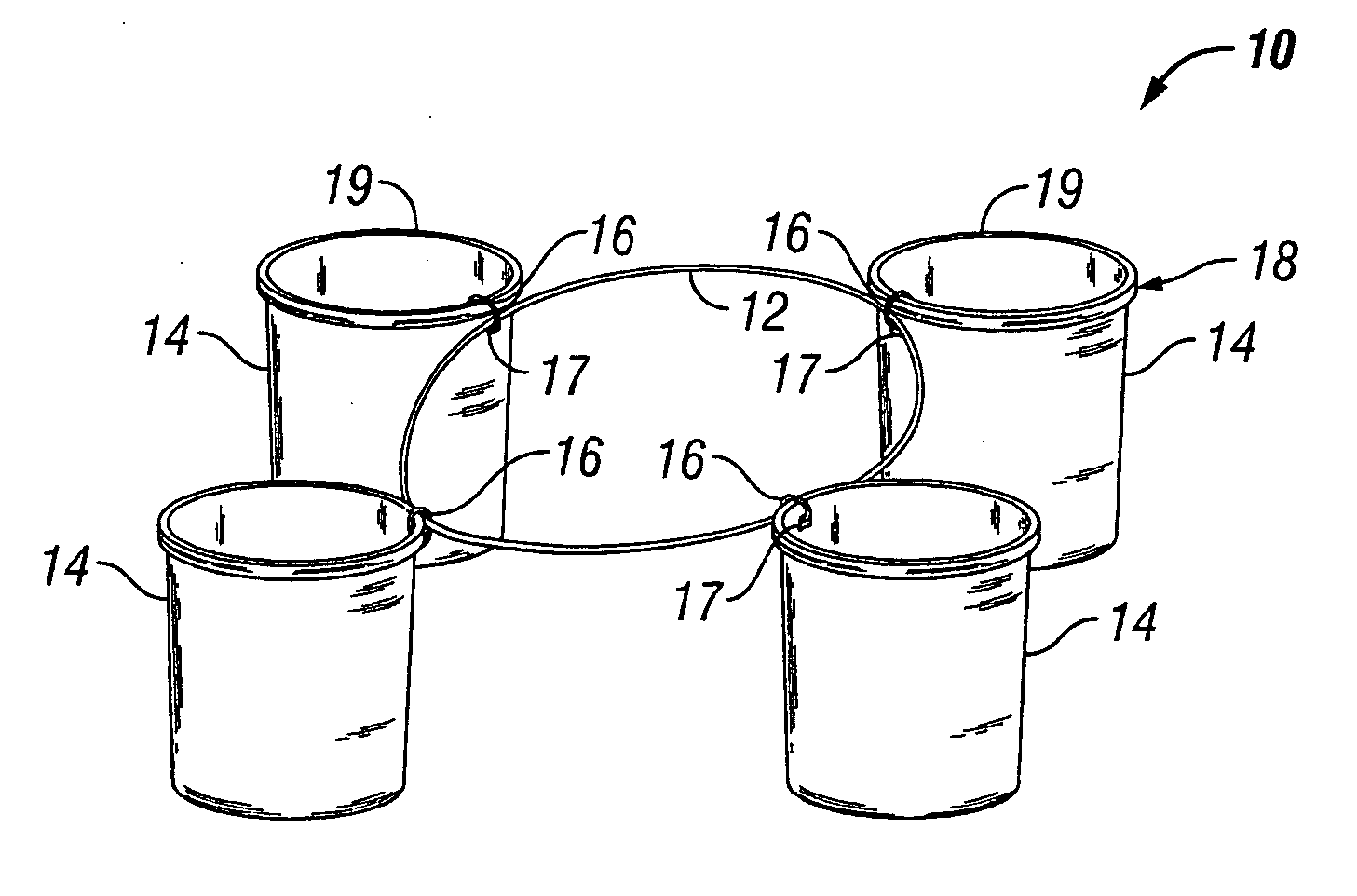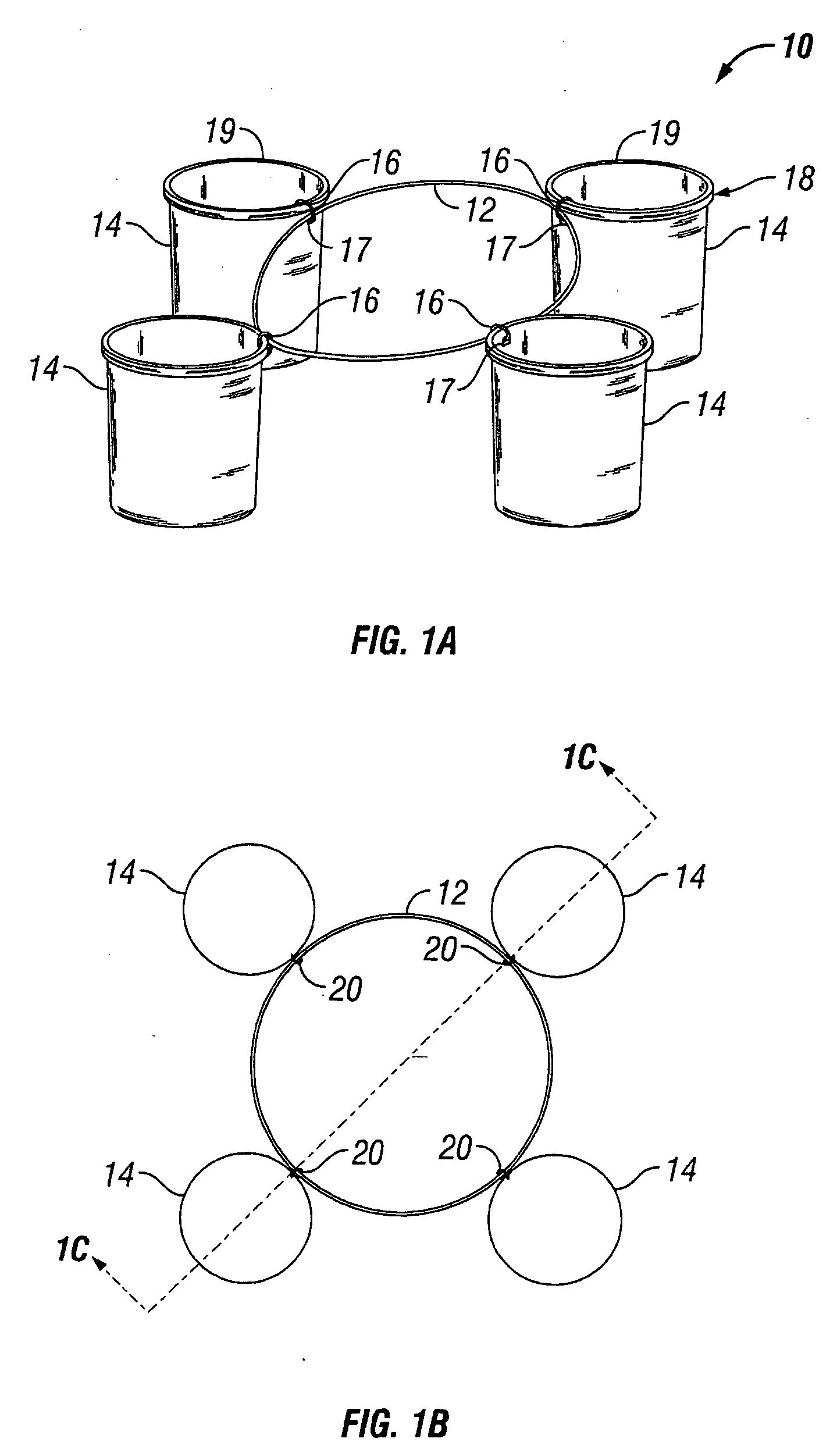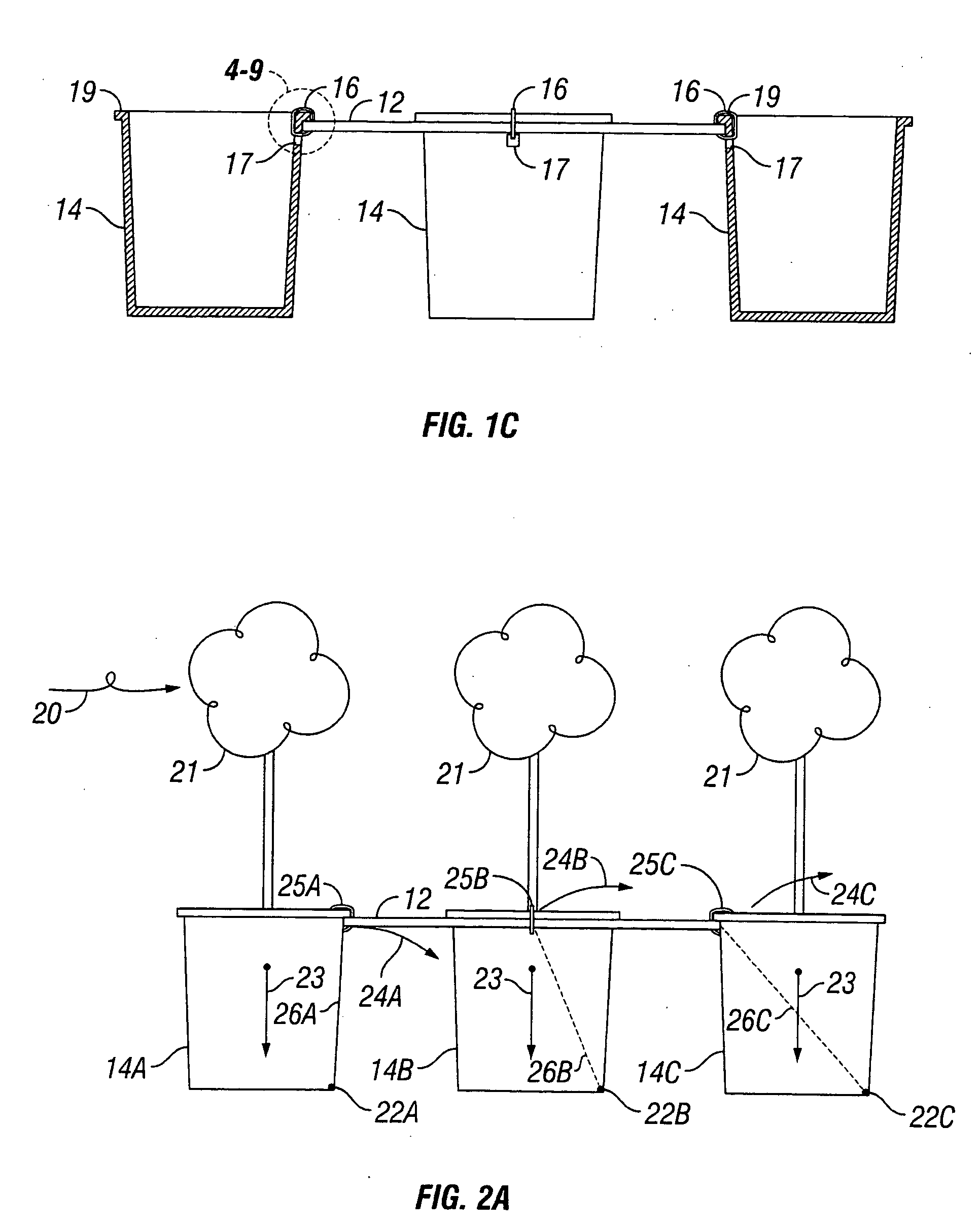Nursery pot stabilization system
a technology for stabilizing systems and nursery pots, applied in flower holders, horticulture, agriculture, etc., can solve the problems of limiting the use of greenhouse complicating the task of providing each plant, and increasing the cost of greenhouses and other protective structures
- Summary
- Abstract
- Description
- Claims
- Application Information
AI Technical Summary
Benefits of technology
Problems solved by technology
Method used
Image
Examples
Embodiment Construction
[0037] The present invention provides a plant container system that has sufficient stability to remain upright under strong winds. The system comprises a rigid spacer that defines a perimeter, a plurality of plant containers disposed about the perimeter of the rigid spacer, and a plurality of fasteners for firmly securing the rigid spacer to the rim region of each container, wherein each container has a rim region and is stabilized by the other containers. Accordingly, the spacer secures, couples or links a plurality of containers together in a configuration that stabilized all of the containers.
[0038] The spacer is secured to the plurality of containers and distributes forces caused by wind among the containers. The spacer secures the containers together in such a manner that leverages the weight of the containers and their contents to stabilize all of the containers. Essentially, the forces applied against one container are opposed by the other containers. By taking full advantag...
PUM
 Login to View More
Login to View More Abstract
Description
Claims
Application Information
 Login to View More
Login to View More - R&D
- Intellectual Property
- Life Sciences
- Materials
- Tech Scout
- Unparalleled Data Quality
- Higher Quality Content
- 60% Fewer Hallucinations
Browse by: Latest US Patents, China's latest patents, Technical Efficacy Thesaurus, Application Domain, Technology Topic, Popular Technical Reports.
© 2025 PatSnap. All rights reserved.Legal|Privacy policy|Modern Slavery Act Transparency Statement|Sitemap|About US| Contact US: help@patsnap.com



